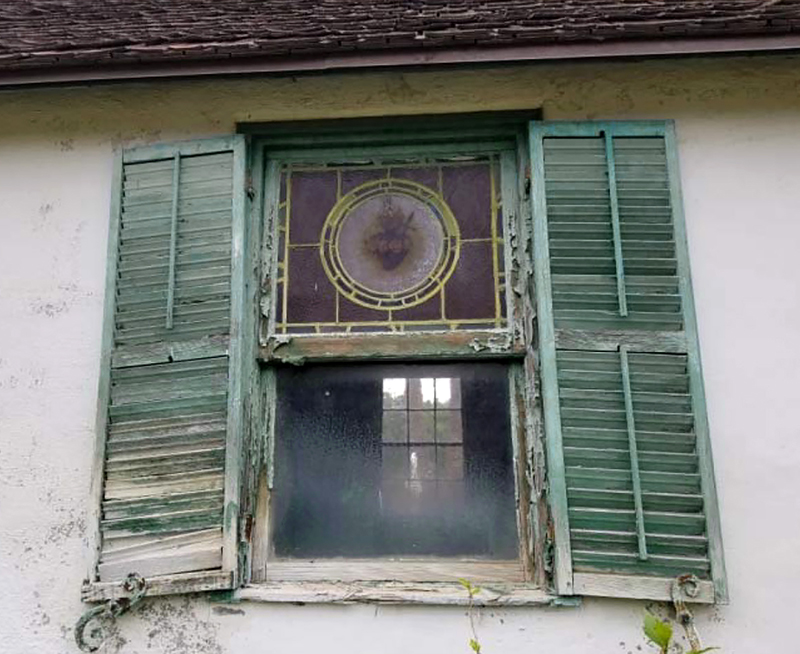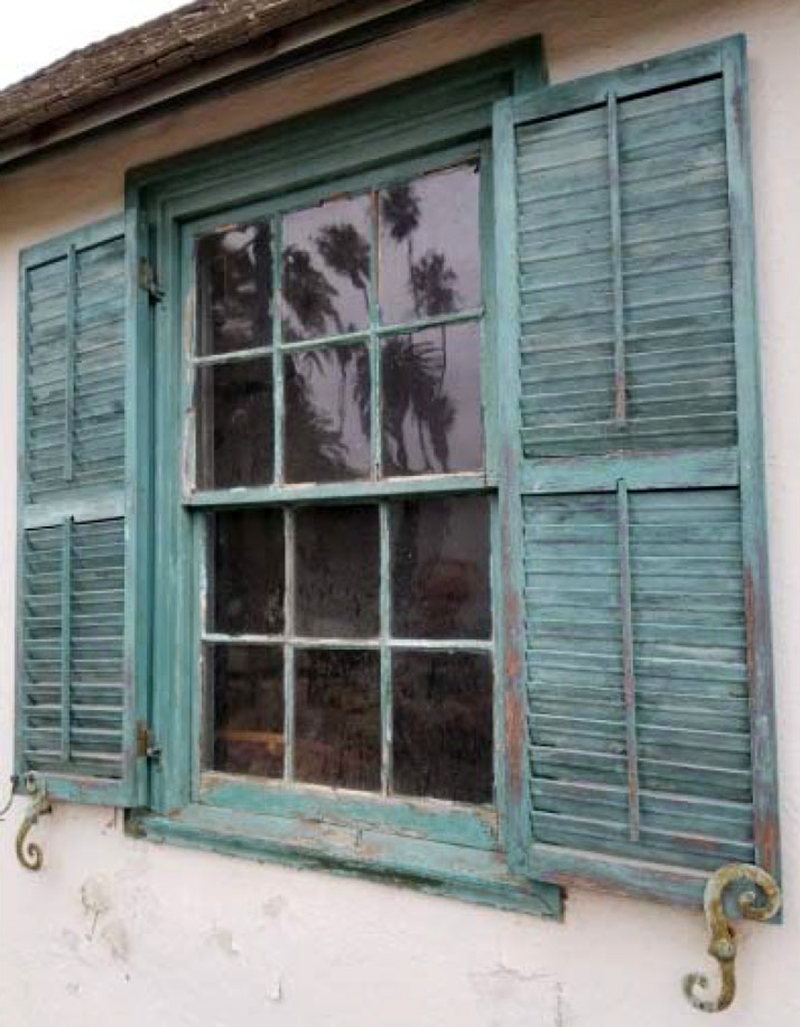|
|
Part 1: Removal
|
In the summer of 2018, Michael Adams, "The Santa Paula Craftsman" (santapaulacraftsman.com, EPA Renovator Certificate No. RI22015-18-3058), restored the worn-out window frames and shutters of the chapel on the grounds of Rancho Camulos Museum. The chapel was built in the 1860s on order of Ysabel del Valle, matriarch of the family that owned most of the Santa Clarita Valley until 1865. This video by Adams' company shows the initial phase of the restoration project, namely the removal of the antique double-hung windows. The video offers a rare close-up look at some of the architectural features and artistry of the chapel and its signature "sacred heart" stained-glass window, which probably dates to the 1920s. The window came from the Roy C. Bailie Studios, which opened for business November 26, 1923, at 2328 W. 7th Street in Los Angeles. (L.A. Times advertisement, 11/26/1923.) The studio was a vendor of Tiffany favrile glass and other Tiffany products. Louis Comfort Tiffany developed favrile glass, a type of iridescent art glass, in the 1890s and used it in his firm's stained-glass windows.
The Restoration Project. Windows:
Window frames:
Marrying frame and windows:
Wood shutters:
"Before" Photos:
|
The site owner makes no assertions as to ownership of any original copyrights to digitized images. However, these images are intended for Personal or Research use only. Any other kind of use, including but not limited to commercial or scholarly publication in any medium or format, public exhibition, or use online or in a web site, may be subject to additional restrictions including but not limited to the copyrights held by parties other than the site owner. USERS ARE SOLELY RESPONSIBLE for determining the existence of such rights and for obtaining any permissions and/or paying associated fees necessary for the proposed use.




